Studies in parasitic medicine are reported by alarming facts. More than 90% of all population age categories are influenced by helminthic invasion, or have a form of transportation hidden from various parasites. They cause many problems, causing a variety of diseases that inhibit a person's normal life. Choosing habitat - the human body, parasites can practically spread to all organs and systems, causing pathological changes in it and violates their functional function.

The main parasite type in the human body
The parasite group that makes the human body habitat include the simplest microorganisms, round worms and tape:
- Speaker. These are small parasites (long, no more than one and a half cm), which are sent to domestic methods, or in contact with the infected person. Often, the flies carrying these worm-parasites are for the carrier of this helminthic invasion. Once on the product, they live there for a long time, and if they are not processed, then they enter the human body. Spreading in the human body, they cause enterobiasis. Often, preschoolers and school age are subject to this type of disease. Enterobiasis lesions in children and adult population can reach up to 90 percent. This parasite habitat is a segment of the blind, the intestinal colonial. This type of parasite does not breathe air; Oxygen is not required for its existence. The nutrients for it are intestinal content. After mating, which occurs in the ileum ileum, crawls out of the anus, the woman places the larva in the anal sphincter area. The biggest danger of enterobiasis is very contagious. Parasites are very easily infected with a slight deviation from individual hygiene norms.
- Soldier. Belong to a circular worm class. Parasites in the small intestine. Call ascariasis. The source of infection is a sick person or an animal. Infections occur through food, not washed hands. Sista worm parasites, fall into the soil, cook to the larvae level, they are dangerous to humans. If a person previously used fruits or vegetables that were not washed, the body was infected. This is also facilitated by the condition of the poor, inadequate heat treatment of the food.
- Ankylostoma. They lead to the development of pathological processes in the body. This is a small parasite, which reaches no more than 2 cm in length. Often, small children are infected (especially in rural areas, due to chicken feet).

- Tape. Belongs to a bandworm, has 12 types. The main parasitation site is the Intestinal Department. The main path of body infection occurs when fish (which does not pass adequate heat treatment), or through objects used to cut meat (knives, cutting boards). This type of parasite feeds all the useful ingredients that a person uses. The length can reach 15 meters.
- Bull and pork. This is a tape worm, the length is 10 meters. When infected with cow's worm spores, tusarinchosis develops, and in the case of pig chain larvae, taeniasis disease develops, larvae levels are referred to as cystiracosis. The development of such pathology is most often facilitated by eating, well -processed meat. But sometimes the infection can occur through the unpredicted hands, and the food. As a rule, in the small intestine of the body, when infected with the disease, one worm alive. In some cases, the duration of its existence can last up to 20 years. Because, with the help of its hook, located on the parasite head, it is tightly mounted to the small intestine wall. And therefore, sometimes difficulties arise for withdrawal.
- Echinococci. These are tape worms up to 8 mm long, they can cause a disease called echinococcosis. The disease is often found in animals (cats, dogs, foxes, wolves). Keep in mind that the human body, for echinococcal pathology, is a mid -residence. The process of infection occurs during direct contact with the animal, or when cutting it. This type of disease is most affected by rural people involved in livestock. The disease often occurs without symptoms, and in the case of their manifestations, cyst formation occurs. To eliminate it, it is necessary to use the surgical method.
- Lamblia. Lead to the development of lambliosis. Parasites belong to the Zhgutikov class, are representatives of Demolomonadide detachment. Favorite habitat is a small intestine of a person or animal. Sometimes they can affect the bird's digestive system. Infections occur in two ways: sometimes there is an infection through the respiratory tract. Cysts enters the body through the lungs, together with inhaled dust, the clinical picture in this pathology can be named as another disease. And accompanied by the development of diseases of the nervous system, liver, endocrine.
- Parasitic mushrooms. They can cause different pathological conditions in the human body (actinomycosis, lichen, microsporia, trichophytosis, favus, erytrazm). They live in the human body, which affects the skin, hair, phalanx nails.
- African malaria parasites.The group includes Plasmodian Malaria. They can cause malaria. The disease is only spread through mosquitoes. For our area, the disease is unclear. He is subject to people living in the Southern countries. Such infectious diseases can develop when visiting these countries. The feature of the disease is that locals have the opportunity to get lower than tourists. This is due to the fact that they develop immunity.
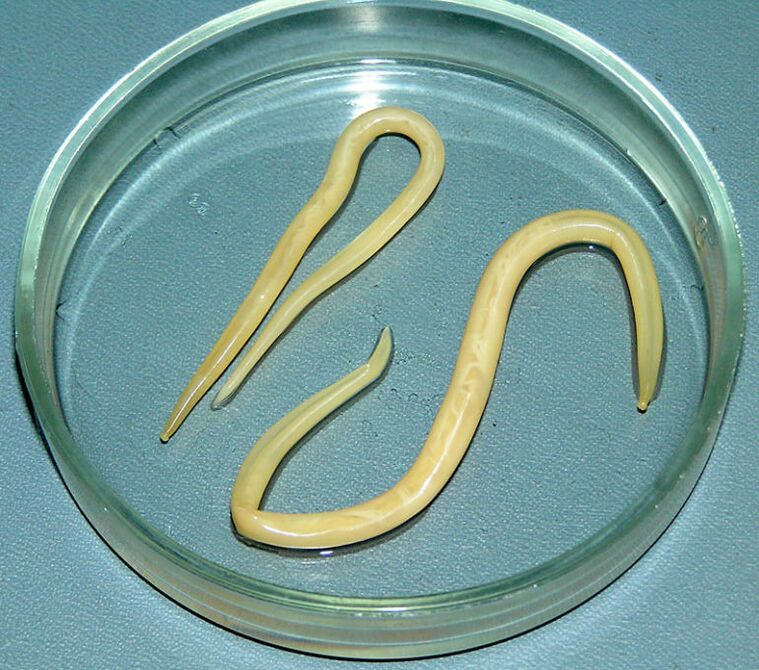
This infection is based on several basic ways:
- Fecal-oral. The use of vegetables and non -washed fruits, not boiled water.
- Percous. With this type of infection, helminthic aggression larvae falls through the pores.
- Household relationships, through daily household goods, or in contact with the infected.
The feature of all forms of helminthic parasites is that they eat at the expense of their owners (people or animals), while they choose useful nutrition (glucose, micro and useful macroelements, carbohydrates). As a result of such pathological effects, the body begins to suffer from potassium, magnesium, zinc, silicone, selenium, and many vitamins. Another feature of this parasite is the high level of adjustment. They adapt to the owner of the owner's body. And they are made invisible to the immune system.
The cause of infection with the parasites of the human body
Among the ways of infection, the following can be distinguished:
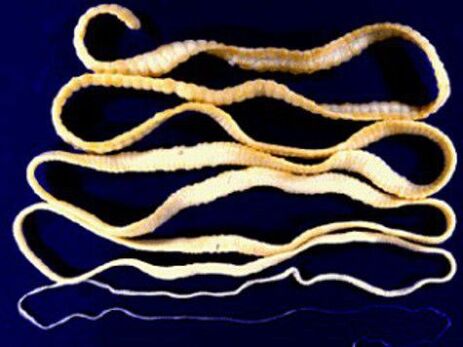
- Eggs and parasitic larvae penetrate the body when using dirty and non -voice water. Or when eating food (fish, meat, canned foods), which has not received adequate heat treatment. This is also facilitated by eating vegetables and uninvolved fruits.
- Helminth eggs and cysts remain on the surface of the skin with a direct contact with a day -day object (door handle, money, toys, stairs). In addition, the source of the infection may be contained in the soil, when contacting the soil, the parasite spores fall in hand. And if they are not thoroughly washed, then this also poses a risk of the threat of body infection with various types of helmets. Therefore, the hands must be washed not only before meals, but also several times during the day, especially if there is contact with the soil.
- A variety of insects (flies, bees, fleas) create a real threat of infection with worms. For this, insects do not need to bite. It is enough that they are, sometimes free to penetrate the home, and sit on food, eating, leaving them the larvae spores of parasites.
If a day -to -day work consists of direct contact with animals (veterinarian, rural population, livestock), the probability of the disease increases significantly.
The main signs and symptoms of parasites in the body
The most important role in the appearance of the first signs and basic symptoms with the development of helminthic invasion is occupied by their location and abilities in the human body. Often, they settle on the top of the small intestine (wide tape, cow and pork chain, ascarides).

Vlasov, for its habitat, selects the colon segment. Opistorchosis affects the biliary channel. Pinworms are located on the colon and rectal lumen. A serious dangerous disease may appear:
- Pain during urination.
- Adenomatous growth.
- Irregular and painful menstrual cycle.
- Appearance of hepatitis and dermatitis.
It is very important to pay attention to the above symptoms. Although, at first glance, they look harmless, in fact, the signs can indicate the presence of parasites in the body.
Symptoms that arise when the body's parasites are often seen by the patient as the presence of other diseases that are not associated with the appearance of worms. This is a great difficulty in making the right diagnosis. The main symptoms in the development of parasitic worms in humans:
- Violation of water removal (constipation). It seems that the accumulation of worms makes it difficult to pass the stool on the intestinal lumen.
- Sometimes diarrhea is observed. This is due to increased production of ferminas (substances such as hormones, produced in the parasite body), leading to imbalance of chloride ions. What explains the cause of diarrhea.
- Increased gas formation.
- There is a violation of the processing and assimilation of lanolin (fat). This is due to the fact that by parasites in the small intestine, parasites cause inflammation of the intestinal mucosa.
- Arthralgia and muscle aches occur.
- In response to the body, allergic manifestations arise, sometimes in the form of urticaria.
- Perhaps the development of ulcerative eczema, skin dermatitis, tumor appearance.
- In terms of the development of helminthiasis, which consumes blood elements, iron deficiency anemia is possible.
- With clinical blood examination, little red blood cells, reduced hemoglobin levels, and decreased color indicators were observed.
- Often, granuloma of the abdominal cavity or uterus, in the lungs and liver.
- The condition of the patient's psychoemotional affected, stated by unreasonable aggressive conditions, increased excitement.
- Due to severe itching in the anus, the night's sleep is interrupted.
- At night, the patient has a toothpick (bruxism).
- Deficiency of choline, vitamins, amino acids, proteins and carbohydrates lead to the development of chronic fatigue, power breakdown.
- Persistent hunger, development of anorexia symptoms.
- Heart muscle disease, heart rate failure.
- In severe cases, the development of onkopathology.
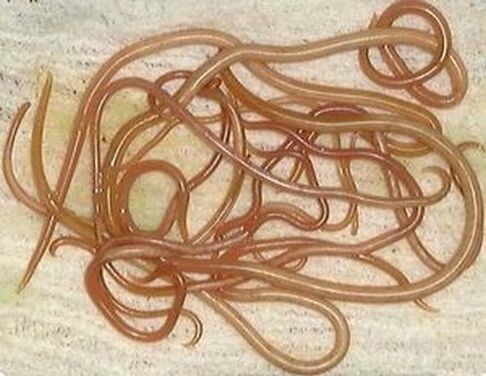
Not only is the type of parasite that has settled in the human body, but also its age, gender, physical characteristics of the body, has a significant effect on the clinical picture.
With the development of acute damage to helminthic invasion, the patient has all the signs of acute intoxication of the whole organism:
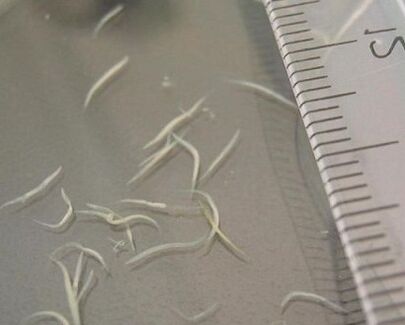
- Nausea, turn into vomiting.
- Hyperthermia (sometimes to high number 38. 9).
- Anorer skin rash.
- Regional lymph nodes are inflamed.
- The pathology process in the liver and lungs is worsened.
If such symptoms appear, a visit to a doctor is very important
Diagnosis of parasites in the human body
For the right diagnosis, you must consult a parasitologist. But often in the city clinic there are no standard units like that. Therefore, you should contact a therapist or gastroenterologist for subsequent tests and further consultation on parasitologists of infectious diseases. For a long time, the determination of the infection with the parasite was only performed by conducting a stool test for the presence of worm eggs, or duodenal sounds. The fence of intestinal content was carried out.
By introducing the investigation. Such research methods do not always reveal the presence of worms in the human body. The modern diagnostic method (ELISA test) allows you to detect and determine any form of parasitic worms in the human body. They are based on the identification of antibodies produced by the body in response to intoxication caused by helminthic invasion. In addition, serological techniques are widely used:
- Coral reefs.
- Ral.
- RSK.
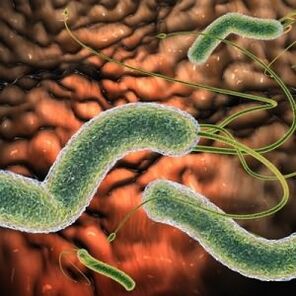
As an additional method of research, it is used:
- Endoscopic examination.
- Ultrasound.
- MRI.
- Endobiopsi.
- Establish an accurate diagnosis using PCR.
Recently, the synchrometer system has emerged. It can detect endotoxin, microbial flora and tumor cells using a variety of expanded electromagnets. With the help of frequency resonance therapy, you can not only diagnose, but also effective therapy of any form of helminths, no matter where they live.






































